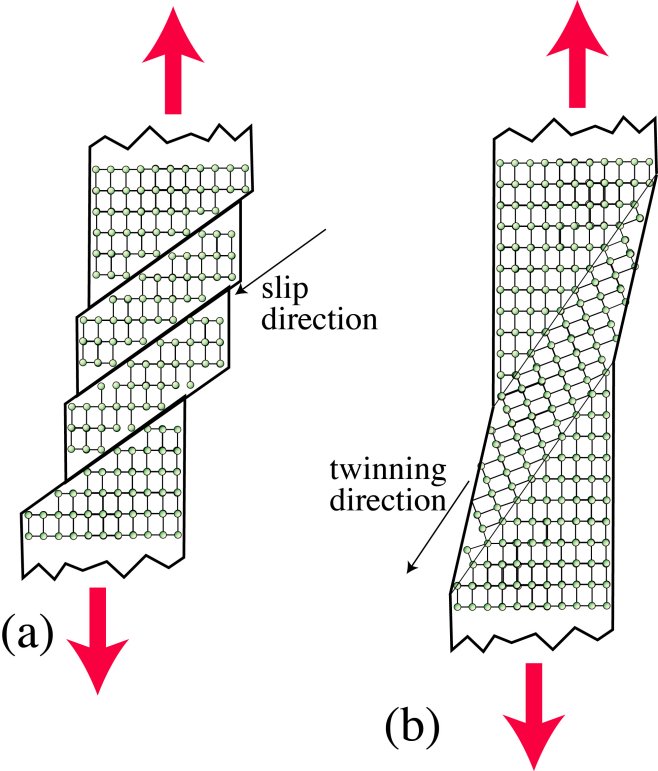Shape changes arising from dislocation glide and deformation twinning (a shear transformation)

The figure schematically depicts the motion of atoms during (a) dislocation glide and (b) deformation twinning, stimulated in both cases by an applied tensile stress. Slip tends to take place by repeated passage of dislocations on specific slip planes. For a single crystal, in the early stages (as depicted here), the slip takes place on a single system (slip plane and slip direction), with little or no interference between individual dislocations. The schematic does not show individual dislocations, but illustrates the displacement of parts of the lattice, relative to other parts, created by their passage. For deformation twinning, on the other hand, the simultaneous, rapid displacement of a large number of neighbouring atoms, all in the same direction, also creates a (shear) displacement of the lattice, although in this case the sheared region has a different orientation from that of the parent crystal. In fact, the structure is a mirror image of the parent, reflected across the twin plane.

